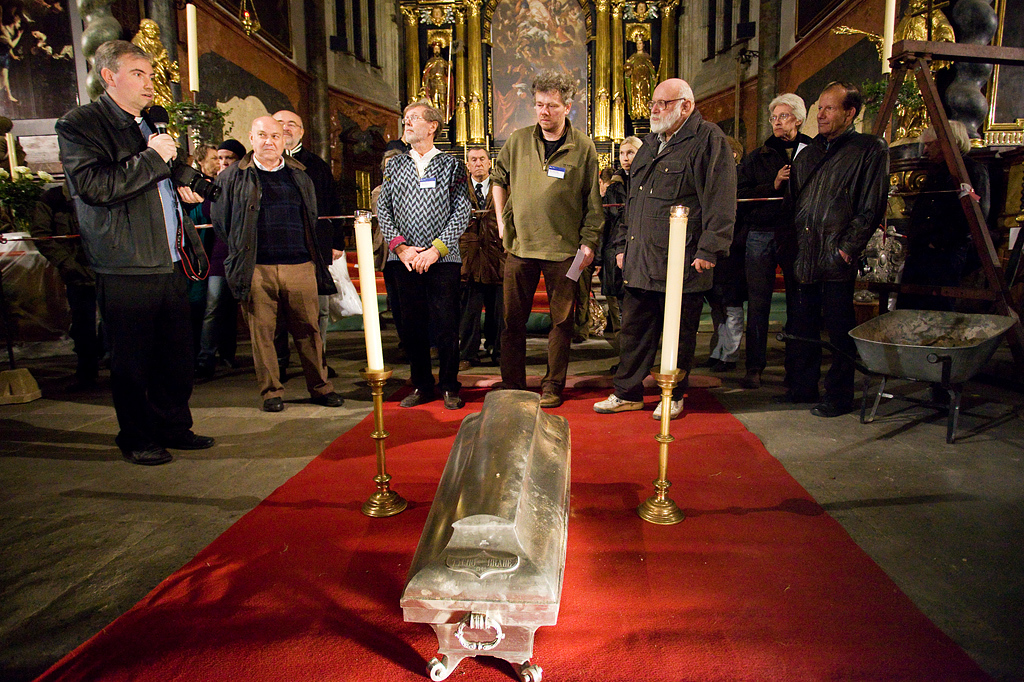Opening Tycho Brahe's tomb
 Tycho Brahe's tomb has been opened in Týn Church in Prague on 15 November 2010. The earthly remains of the astronomer who spent two years of his life in Prague where he died in 1601 will be submitted to scientific research. Over the centuries his death has been subject to speculation; Brahe is largely believed to have died from a bladder rupture, as he was afraid to leave the table at which he had been dining with emperor Rudolf II. Jiří Smolík of Laboratory of Aerosol Chemistry and Physics, Department of Aerosols and Laser Studies was member of a research team of scientists and archaeologues led by professor Jens Vellev, danish archaeologue of Aarhus University. After a thorough examination and sampling were Brahe's earthly remains laid to rest again in a funeral service celebrated by Prague archbishop monsignore Dominik Duka.
Tycho Brahe's tomb has been opened in Týn Church in Prague on 15 November 2010. The earthly remains of the astronomer who spent two years of his life in Prague where he died in 1601 will be submitted to scientific research. Over the centuries his death has been subject to speculation; Brahe is largely believed to have died from a bladder rupture, as he was afraid to leave the table at which he had been dining with emperor Rudolf II. Jiří Smolík of Laboratory of Aerosol Chemistry and Physics, Department of Aerosols and Laser Studies was member of a research team of scientists and archaeologues led by professor Jens Vellev, danish archaeologue of Aarhus University. After a thorough examination and sampling were Brahe's earthly remains laid to rest again in a funeral service celebrated by Prague archbishop monsignore Dominik Duka.
In the nineties of the last century Danish and Swedish scientists found mercury in samples of Tycho´s hair taken during the opening of his tomb in 1901. Other hypotheses on Brahe's death are thus being considered apart from the popular belief that Brahe died from a ruptured bladder. He may have been murdered following orders of the danish king Christian IV. or might have died of mercury overdose which he took as analgesic.
Samples of Brahe's hair were therefore taken and his bones were examined by a CT scan in Na Homolce hospital in Prague. His funeral gown was examined before his re-burial in the Týn Church and appears to be in a better state than originally expected.
Jiří Smolík measured concentrations of aerosol particles in the indoor environment of the Týn Church. Among other things it was found that due to stack effect, caused by vents in the ceiling of the church, particles created outside such as those from the nearby Christmas market could be detected in the air inside the church.
Further details on the project may be found on the Aarhus university Humanities Faculty website, in ČT24 and BBC reports or in HuffingtonPost.
